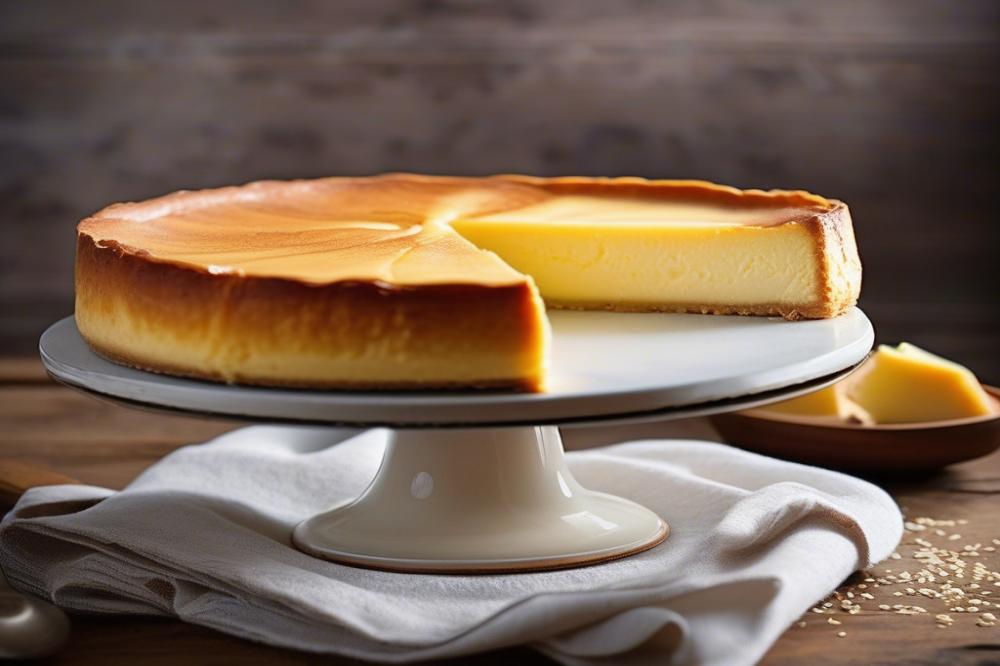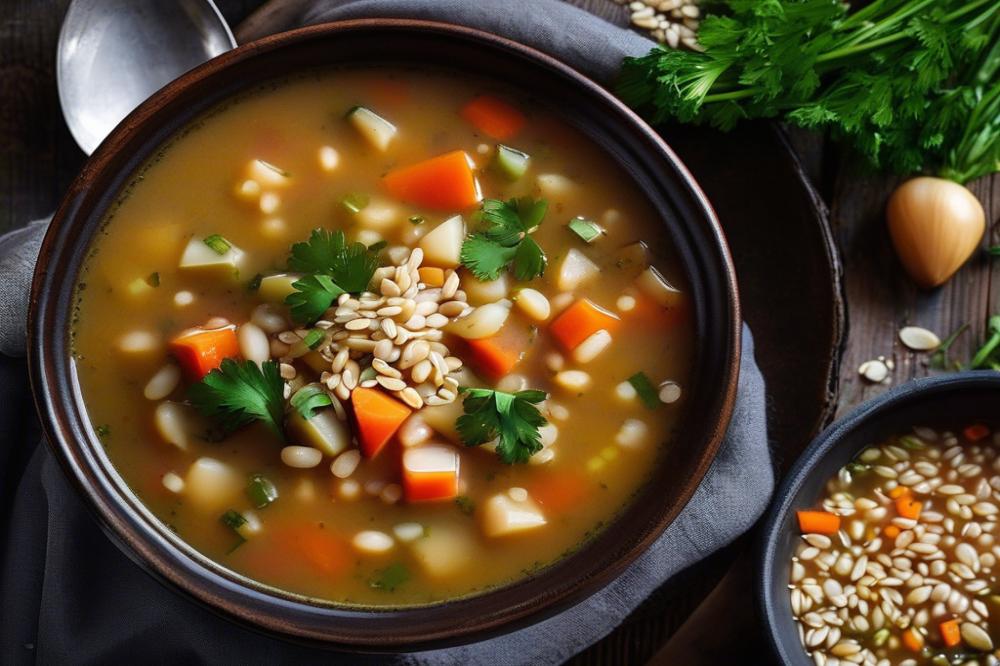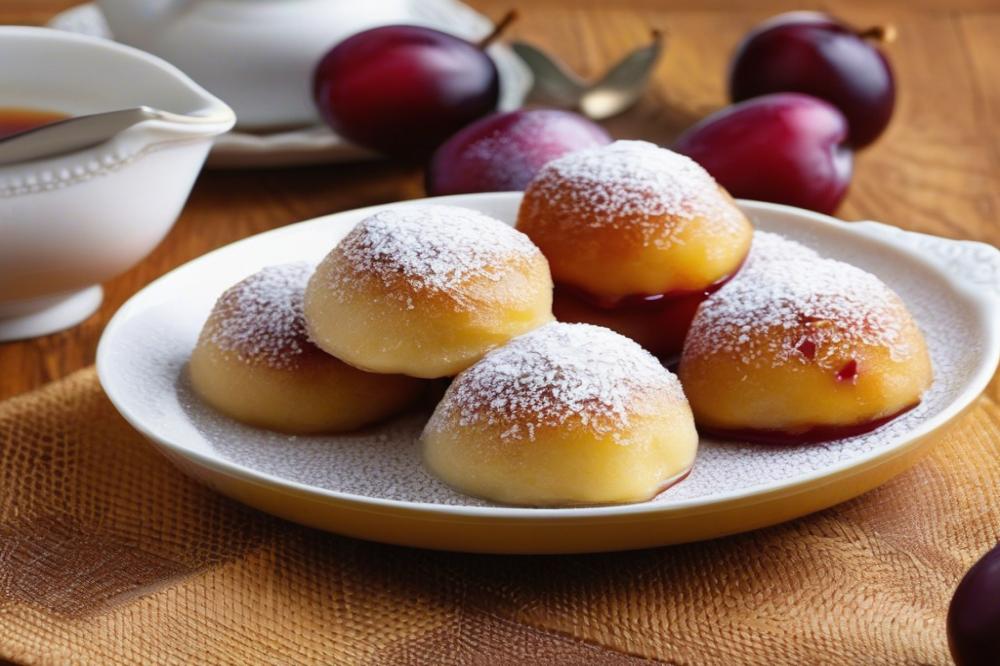Introduction
The Sernik is a beloved staple in Polish cuisine, delighting taste buds for generations. This delectable cheesecake embodies a perfect blend of tradition and flavor, making it essential in both classic and modern Eastern European desserts. Known for its cheesy dessert profile, the dish offers more than just a sweet treat; it brings families together around the dinner table.
What truly sets this Polish Cheesecake apart is its creamy texture. Each bite melts in your mouth, thanks to the rich combination of ingredients like sour cream and smooth cheese. The crust, often made from crushed biscuits or a traditional pastry, adds a delightful crunch that contrasts beautifully with the soft filling. Vanilla typically enhances the flavor, making this easy dessert a favorite among those with a sweet tooth.
Every slice of Sernik tells a story, whether shared during special occasions or enjoyed as an everyday indulgence. Baking this dessert is an art, where each family might have its own secret recipe passed down through generations. Yet, despite the variations, the basic elements stay true, creating an authentic taste of home for many.
The History of Sernik
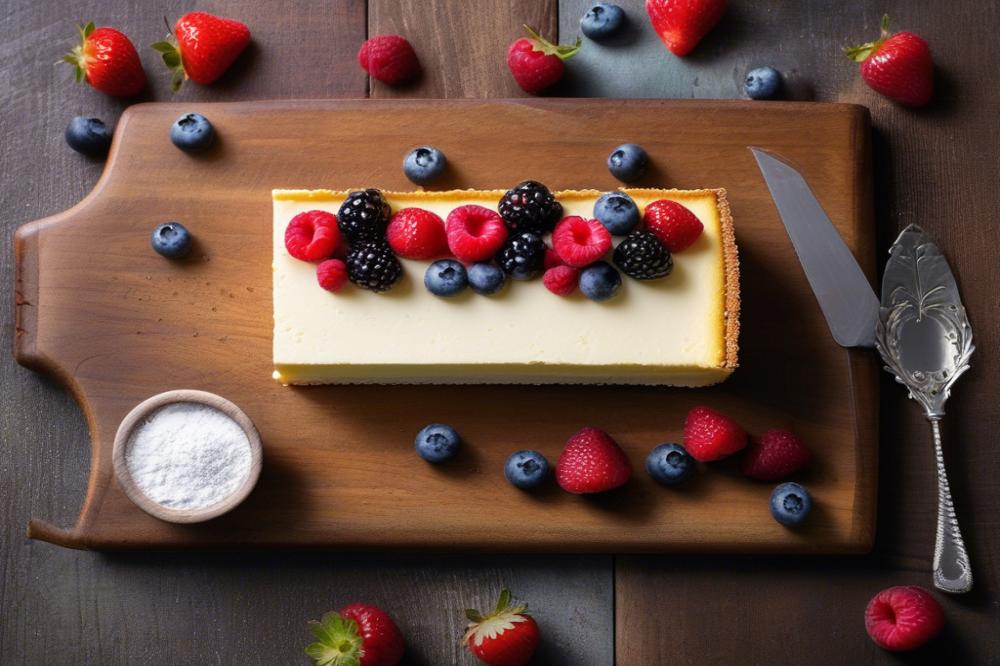

The origins of Sernik can be traced back to Poland’s rich culinary tradition. This cheesy dessert has roots that go deep into history. In earlier times, simply prepared cheese was mixed with eggs and some sweeteners. Over generations, this process evolved into what we now recognize as a creamy texture that defines the cheesecake. The introduction of sour cream enhanced the richness of this sweet treat, making it even more appealing.
Evolution Across Regions
As people traveled and lived in different areas, the traditional recipe for Sernik began to vary. In southern Poland, you might find a crust made from crushed biscuits, while northern regions often prefer a delicate pastry base. Every area adds its unique twist, resulting in diverse flavors and presentations. Vanilla has also become a popular flavoring in many versions, bringing a warm scent to the dessert. These regional differences show how adaptable and cherished the dish truly is.
Variations in Eastern Europe
Sernik hasn’t kept its charm just within Poland. Many neighboring countries also enjoy similar styles of cheesecake. In Hungary, for instance, túrós süti is a popular variation that incorporates a similar creamy filling. Ukrainians have their own take, which often highlights farmer’s cheese, creating a different texture and taste. These Eastern European desserts share a common theme: a love for baked cheese. Each version reflects the culture and preferences of its region, making it a delightful exploration for any dessert lover.
Ingredients for Sernik
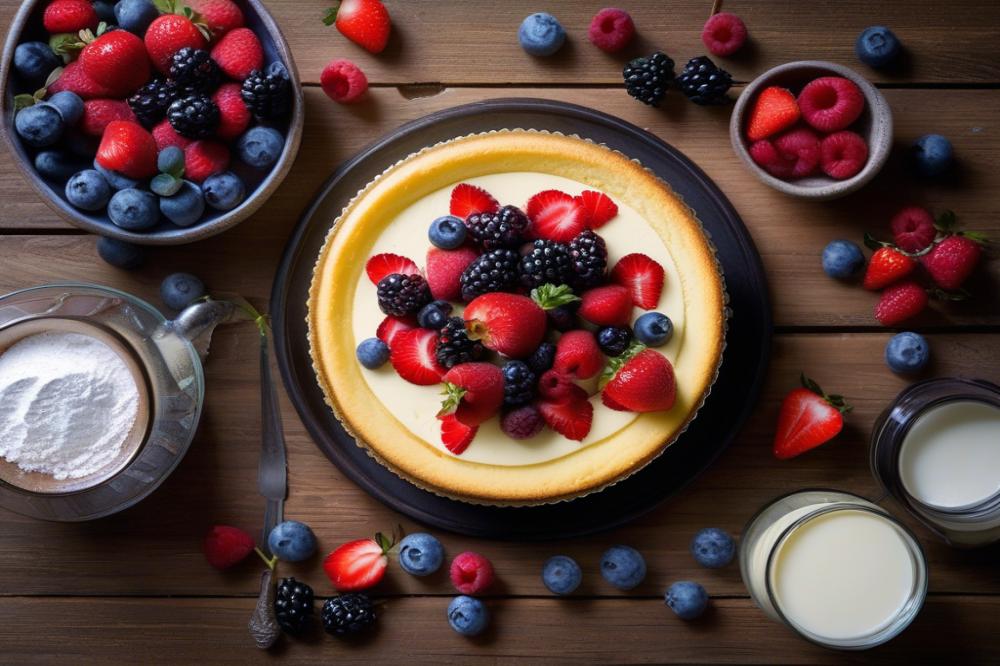

To create this heavenly cheesy dessert, gathering the right ingredients is key. Let’s look at what you’ll need for this delightful Polish Cheesecake.
- 1 1/2 cups graham cracker crumbs
- 1/2 cup unsalted butter, melted
- 4 cups farmer’s cheese or cream cheese
- 1 cup sour cream
- 1 cup granulated sugar
- 4 large eggs
- 2 teaspoons vanilla extract
- Zest of 1 lemon
These ingredients blend beautifully together, creating a delectable creamy texture. Each element plays a crucial role in making this traditional recipe shine. For instance, the buttery graham cracker crust adds a perfect base. The creamy blend of cheese provides richness that you won’t forget. Moreover, the addition of sour cream brings a subtle tang that balances the sweet treat beautifully.
Nutritional Information
Let’s break down some nutritional information for each ingredient. This will help you understand what’s in your delicious creation:
- Graham cracker crumbs: Approximately 150 calories, 7g fat, 20g carbohydrates, 2g protein. Contains calcium and iron.
- Unsalted butter: Roughly 400 calories, 46g fat, 0g carbohydrates, 0g protein. High in vitamin A.
- Farmer’s cheese or cream cheese: About 300 calories, 24g fat, 6g carbohydrates, 10g protein. A source of calcium.
- Sour cream: Around 200 calories, 20g fat, 4g carbohydrates, 3g protein. Contains B vitamins.
- Granulated sugar: Approximately 800 calories, 0g fat, 200g carbohydrates, 0g protein. Pure energy.
- Large eggs: About 280 calories, 20g fat, 2g carbohydrates, 24g protein. Packed with vitamins D and B12.
- Vanilla extract: Roughly 12 calories, 0g fat, 0g carbohydrates, 0g protein. Adds flavor without calories.
- Lemon zest: Minimal calories, but packed with vitamin C and adds a refreshing aroma.
As you can see, this easy dessert not only promises a rich, satisfying bite but also offers some nutritional perks. When baking Eastern European desserts like this, it’s nice to know you’re treating yourself to something both tasty and somewhat wholesome. Don’t overlook the flavors that come from these ingredients; each one adds to the overall experience of enjoying your homemade cheesecake.
Cooking Instructions


Preparing the Crust
Start by gathering your ingredients. For the crust, you will need crushed biscuits, melted butter, and a pinch of sugar. Combine the crushed biscuits and sugar in a bowl. Slowly mix in the melted butter until the mixture holds together. Press this mixture firmly into the bottom of a springform pan. A solid base will give your cheesecake a delightful crunch. Once it’s packed tight, place it in the refrigerator while you work on the filling.
Mixing the Filling
Now, turn your attention to the filling for this delicious cheesy dessert. In a large mixing bowl, start with softened cream cheese. Beat it with a mixer until it’s smooth and creamy. Add in sugar and blend well. Don’t forget the vanilla. This gives a lovely flavor. Next, mix in sour cream. It adds to the creamy texture that makes this dessert so special. Incorporate eggs one by one, mixing well after each addition. The batter should be light and fluffy.
Baking Process and Cooling
It’s time to bake! Pour the filling over the prepared crust in your springform pan. Preheat your oven to 325°F (160°C). Bake for about an hour. The center may seem a little wobbly; that’s okay. After baking, turn off the oven and leave the cheesecake inside for another hour. This helps it set gradually. Once cooled, remove it from the oven and let it chill in the refrigerator for several hours or overnight. Patience is key for building flavor.
Tips for Achieving the Perfect Creamy Texture
For a perfectly creamy texture, try these simple tips. First, make sure all your ingredients are at room temperature. Cold ingredients can lead to lumps. Baking with a water bath can also help maintain moisture. Just place a larger pan filled with water on the lower rack of your oven. Consider using full-fat cream cheese and sour cream. These ingredients contribute richness and a luscious mouthfeel. Lastly, resist the urge to overbake. A slight jiggle in the center indicates that it’s just right. Enjoy your sweet treat as a classic example of Eastern European desserts!
Serving and Enjoying Sernik
Traditional ways to serve Sernik
The Polish cheesecake is a delightful treat. It often shines at gatherings and holidays. Serve it chilled for the best experience. A simple dusting of powdered sugar makes it extra appealing. Some people love adding fresh fruit on top. Berries, like strawberries or blueberries, provide a beautiful contrast. You could also use a drizzle of fruit sauce for an added touch. Another option is to enjoy it plain, allowing its rich, creamy texture to stand out. Traditionally, this sweet treat is shared with family and friends during special occasions.
Pastry pairings and beverage suggestions
Pairing desserts can enhance their flavors. This cheesy dessert goes wonderfully with tea or coffee. A strong brew can balance the richness of the cheesecake. If you prefer something sweeter, consider a light fruit juice. Lemonade or berry-infused drinks add a refreshing twist. For a unique experience, serve a slice with a buttery pastry. Croissants or puff pastry can complement the delicious crust. These pairings elevate your dessert experience in delightful ways.
Variations and adaptations for dietary preferences
There are many adaptations for those with dietary needs. A gluten-free option is easy to make. Substitute regular flour with almond or coconut flour in the crust. This alteration helps those on a gluten-free diet enjoy the dessert. If you are avoiding sugar, alternatives like honey or maple syrup work well. These options maintain that sweet flavor without the guilt. Vegan adaptations also exist. Using plant-based cream cheese along with sour cream can create a delicious alternative. The flavor and creamy texture are still preserved, making it a perfect option for everyone.
Sernik in Polish Culture
Role of Sernik in Polish Celebrations and Family Gatherings
Sernik is more than just a dessert; it holds a special place in Polish culture. Families often prepare this dessert for important occasions, such as weddings, birthdays, and holidays. A gathering without this sweet treat feels incomplete. At Christmas, it is common for families to serve it alongside other traditional recipes. Its creamy texture and rich flavors bring everyone together, making it the star of the table.
Personal Anecdotes from Polish Chefs or Families Regarding Sernik
Many Polish chefs share heartwarming stories about their childhood experiences with this cheesecake. One chef recalls making it with their grandmother. The whole family participated in the baking process. Everyone took part in mixing the ingredients and preparing the crust. That sense of togetherness remains a cherished memory. Another family passes down a classic recipe from generation to generation. Preparing this dessert connects them to their roots, creating bonds of love and tradition.
Comparison to Other Famous Cheesy Desserts
When considering other Eastern European desserts, Sernik stands out uniquely. Other cheesy desserts, like the Italian ricotta cheesecake or the Greek galaktoboureko, are delicious but have different textures and flavors. Often, ricotta has a more granular feel, while Polish cheesecakes focus on smoothness. Sour cream in Sernik introduces a tanginess that enhances its creamy texture. Each dessert tells a different story, yet Sernik’s charm lies in its simplicity and ease of preparation. It can effortlessly capture the hearts of those who try it.
Wrapping Up the Sernik Adventure
Polish cheesecake holds a special place in the hearts of many. A cherished classic, this dessert represents more than just food; it stands as a symbol of tradition and family gatherings. Every bite of a well-made version brings back memories, evoking feelings of warmth and nostalgia. It’s no wonder that this recipe has survived the test of time, cherished in homes across generations.
Trying your hand at baking this cheesy dessert at home can be a rewarding experience. The creamy texture is not just delightful but rewarding. With a few simple ingredients, you can create something that delights your taste buds and impresses your friends. Everyone deserves to taste the magic that comes from a homemade treat. Why not gather your ingredients and start mixing? You might discover your new favorite recipe in the process.
In today’s fast-paced world, holding on to traditional recipes is vital. They connect us to our roots and our history. By making this cheesecake yourself, you’re playing a part in preserving a beloved culinary art. It’s through these timeless dishes that cultures thrive and memories are made. Embrace the joy of baking, and let that oven fill your home with warmth and happiness. Take a step toward keeping this delightful tradition alive.

